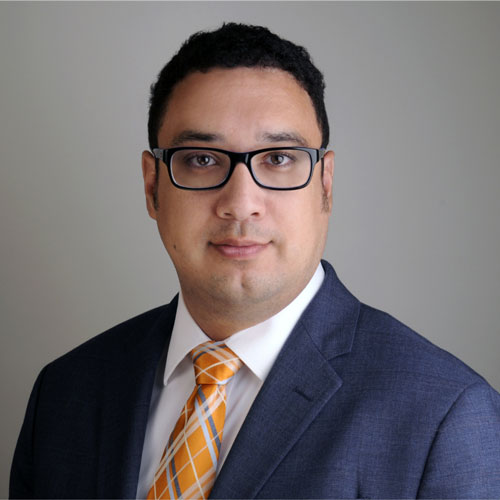Why Is a Jury Trial so Much Longer Than a Trial Without a Jury?
This question comes to me from overseas this week. A client of mine is under investigation for a crime and is currently overseas. The police will likely charge him and he will need to return to Canada to obtain his Court date. He asked me for advice on what type of trial he should have. After I explained that this is a decision we could only make at a later stage, he asked me for some of the factors to take into consideration when estimating costs, etc. Since this is a question I often get asked, I wanted to set the following things out.
Section 11(f) of the Canadian Charter of Rights and Freedoms says:
Any person charged with an offence has the right to the benefit of trial by jury where the maximum punishment for the offence is imprisonment for five years or a more severe punishment.
(This does not apply to a case of an offence under military law tried before a military tribunal – this may be the subject of another article)
The first observation is that although it is a constitutional right to have a jury trial, this right is restricted to more serious offences where the Crown proceeds by indictment and where the maximum punishment is five years or more in jail.
Election for Judge and Jury
When a matter goes to Court for the first time (with the exception of the most serious crimes, i.e. murder, treason, etc.) it proceeds in the provincial Court, like the Ontario Court of Justice, the Court of Quebec, or the Quebec Municipal Court. There will be several appearances in the provincial court. These appearances are casually referred to as the “remand” phase (or, in Quebec, the “pro forma” phase). During this phase I will review the disclosure in my client’s case, request and review additional disclosure, review any documents or speak to any witnesses provided by my client, and develop a strategy. I will also speak to the Crown prosecutor to see if the matter can be resolved.
It is around this time that I decide with my client what mode of trial they want.
The options are
- A trial in the provincial Court;
- A trial in the provincial Court (with a preliminary inquiry first);
- A trial in the Superior Court with a Judge only (and without a preliminary inquiry);
- A trial in the Superior Court with a Judge only (with a preliminary inquiry first);
- A trial in the Superior Court with a Judge and Jury (and without a preliminary inquiry);
- A trial in the Superior Court with a Judge and Jury (with a preliminary inquiry first).
It should be noted
- Option 2 is something which occurs in Quebec because a “judge alone” trial is deemed to be a judge of the Court of Quebec (even a Superior Court judge-alone trial) due to provisions in the Court of Quebec. Although Option 2 could occur in Ontario, it will almost never occur for some practical reasons.
- Recent amendments to the Criminal Code have made options 2, 4 and 6 not possible in some cases. Preliminary Inquiries are now only available for certain offences such as offences where the maximum penalty is now 14 years in jail or more.
- Where the Crown elects summarily or the matter is a “straight-summary” offence, only Option 1 is available.
So in practical terms for most offences now, the choices will be
- Do I keep the matter in front of the Provincial Court?
- Do I put it in front of a Superior Court Judge?
- Do I put it in front of a Superior Court composed of a Judge and Jury?
The Time for Trial For a Jury Trial Will Greatly Exceed the Time for Trial in a Judge Alone Case
Let’s use the example of a sexual assault case where someone’s ex-girlfriend says that one night after coming home from the bar, the accused wanted to have sex, but the complainant did not want to. The allegation is that the accused forced sex on his girlfriend. The accused gives a statement to police where he admits to having sex but claims it was consensual.
In a typical provincial court trial
- The complainant will testify for two hours and be cross examined for two hours;
- The prosecution may call other witnesses (for example, the responding police officers) for an estimated two hours;
- If the accused wants to challenge the admissibility of his statement to police (since even an honest, exculpatory statement can be unfairly used against him) this may add another two hours to the case;
- The accused will often testify, which in many cases can take 2–4 hours;
- The parties will make arguments on the case, which can take a total of 1–2 hours.
Total time: 2–3 days of trial time.
How is a Jury Trial Different?
- The first thing that comes to mind is the challenge to the admissibility of the statement. It could be that the statement contains some information which is legally insignificant but could sound bad to a jury—for example an inculpatory (incriminating) statement that is unreliable or the product of police trickery. In a judge-alone trial, a judge is expected to “disabuse” themselves from the statement should they choose to exclude it from the trial. However, human beings are human beings and human nature being what it is, it can be hard to get an impartial decision from a judge who knows there was an inculpatory statement, even if the judge has said they would not consider it. So when dealing with a jury, there is a hearing in advance to decide whether the statement is in or not. This is done apart from the jury. The Superior Court has more formal rules for dealing with these proceedings, so what would have taken two hours (blended with the trial) in a judge-alone trial might take a full day, or possibly even two days, before the jury is even selected.
- Once pre-trial motions are complete, a jury can be selected. The jury selection process often takes an entire morning, although recent amendments to the Criminal Code make jury selection faster. Even with those changes, once the jury is selected, the judge will need to provide lengthy instruction to the jury, introducing them to their job and explaining some key points. All these preliminary steps will usually take the first full day of the jury portion of the trial.
- Then, before the first witness is called, the Crown will give an opening address. Sometimes the accused’s lawyer will also give an opening address immediately after but this is usually only done when the defence decides to present evidence (towards the middle of the trial). At the conclusion of the case, both the Crown and defence give closing addresses. Each of these oral addresses can take two or three hours, as they need to present the argument in a way that ordinary people can understand. Technical terms and complicated concepts need to be broken down and explained. Accordingly, these opening and closing addresses often add an extra two days to the total length of the trial.
- The length of time to hear witnesses also gets longer. In the previous example estimating the time a provincial court trial takes, the time devoted solely to the witness testimony was approximately 1–2 days. It is not uncommon in a jury trial for the time taken to hear the evidence to be double that. There are a number of reasons for this. The three chief reasons are
- There are often objections to questions or answers. Hearsay, leading questions, unfair questions, questions or answers which contravene rules in the Criminal Code or common law, etc., are examples of such objections. Where a judge is hearing the case alone, there is no jury. When there is a jury, the jury often has to be sent out and brought back in every time there is a significant objection. This takes time.
- The judge often needs to hear more fulsome arguments on why an objection should be sustained or overruled, and depending on the outcome, what the proper remedy is. It could be that the jury is permitted to hear what was objected to, it could be that the jury is denied hearing the objectionable evidence, or it could be that the judge allows part of the content, or rules that an alternative way of proceeding is advisable. Coming up with this solution, and in some cases, delivering a short ruling, takes time as well.
- Since the testimony of witnesses is the most significant component of a trial, there is a certain “performance” element where the lawyers for both sides may script their questions with a more dramatic effect in mind. When dealing with a judge, certain corners can be cut because judges are well familiar with certain cross-examination techniques but sometimes with a jury, in order to “paint that picture” the witnesses need to be taken on the scenic route through the evidence.
As a result, in this hypothetical example, we can add another 1–2 days.
- Once the evidence has been presented and the closing arguments are complete, the judge needs to instruct the jury. That can often take most of a day. Moreover, the instructions given to the jury are often the subject of disagreement by the lawyers and so the judge will often engage the lawyers informally, or even formally, to offer input into how those instructions will look. Many judges even provide drafts of their instructions (called the “charge to the jury”) to counsel and these instructions sometimes go through multiple drafts. I would estimate that this whole process adds another two days.
- Many juries deliver a verdict within a few hours but some will take into the next day or even take several days.
The end result is that the 2–3 day trial becomes 1–2 weeks. In our example above, there would be 1–2 days of pre-trial motions followed by 6–7 days before the jury, even without considering days of deliberation. These estimates are often rounded up to take into consideration deliberation since, unlike a trial in the provincial court, which can be continued days or weeks, or even continued months later if time runs out, jurors have their lives to go back to and so a trial with a jury will typically “run ‘til it’s done.”
One Last Consideration for Costs
One last thing to consider when estimating the costs of a jury trial is that each day of trial is likely going to take more time and energy (and thus money) from the lawyer. Days of trial are lengthy and often at the conclusion of the day of trial, the lawyer will begin working on the next morning’s work (even after having prepared it in advance) since jury trials are, at times, an unpredictable combat arena.
If you have any questions about how jury trials run, or the decision to elect to have a jury, please do not hesitate to contact me.
David Anber
David Anber
David Anber has been a trailblazing legal practitioner since 2006. His early entry into law practice during his studies marked the beginning of a distinguished career. As a member of both Ontario and Quebec’s bar associations, David excels in defending traffic and criminal cases across both provinces. David contributes to legal discourse through articles for the Defence Counsel Association of Ottawa and the Criminal Lawyer’s Association of Ontario.

